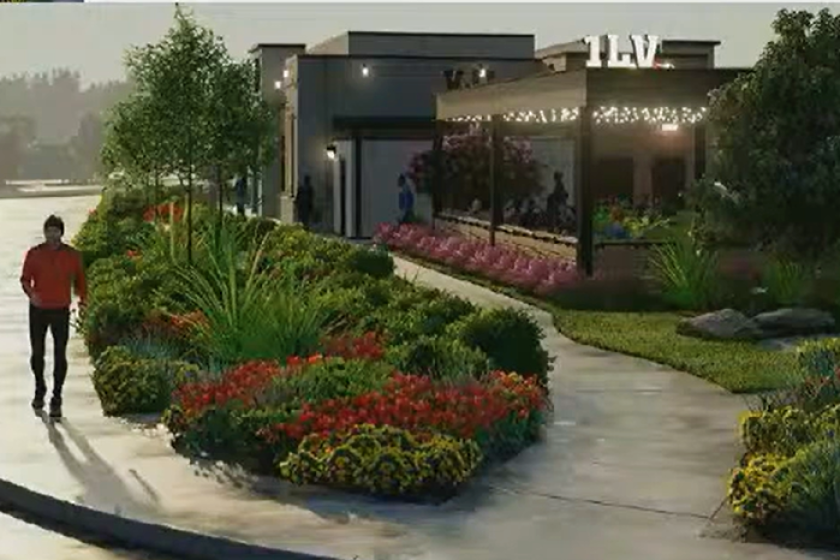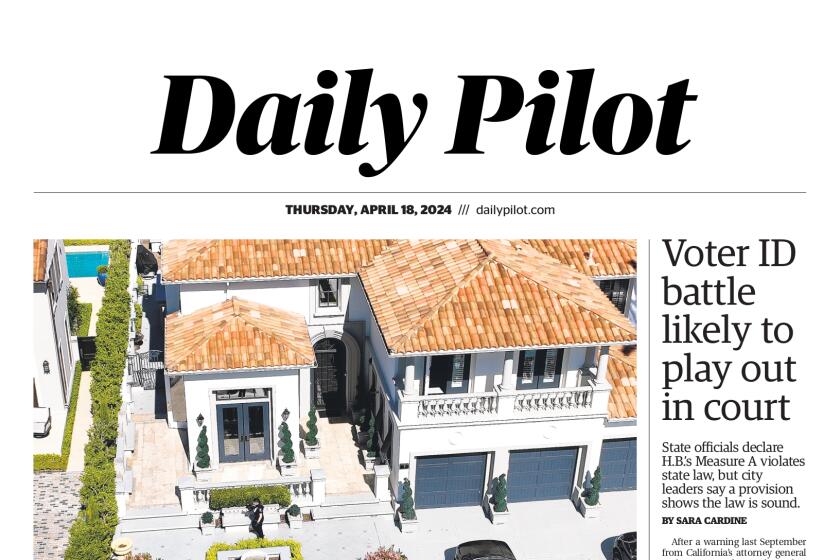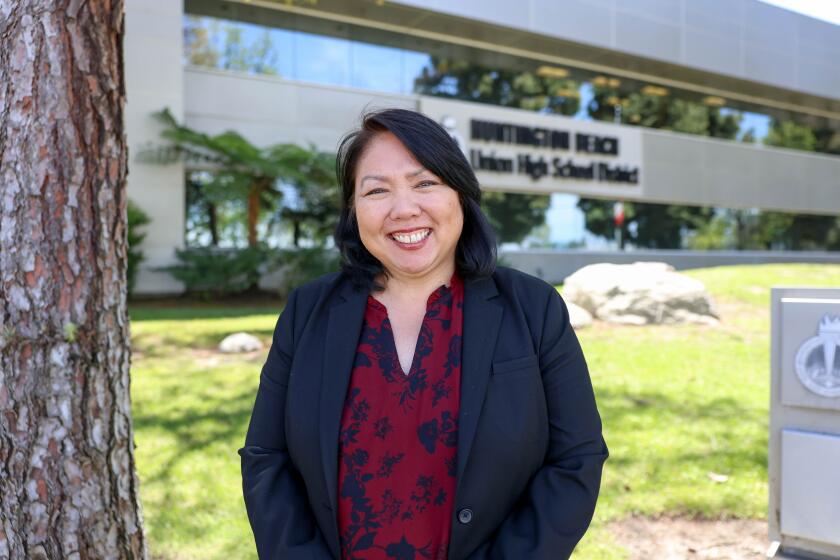Residents may turn to lawsuit to get long-awaited turnaround where street ends at Fairview Park
After years of waiting, some residents on Pacific Avenue in Costa Mesa say they’re considering legal action to compel the city to move ahead with building a turnaround where their street dead-ends at Fairview Park.
Residents have appeared regularly at public meetings in recent weeks to lobby for the project, which the City Council approved in September 2013.
The campaign continued at Wednesday’s meeting of the Fairview Park Steering Committee.
“Quite frankly, the reason our residents have come together is because, for the last five years, we have not felt safe in our homes … because of the attractive nuisance of this unmaintained, unsecured, unimproved entrance and the element it attracts at all hours of the night in front of our homes,” Pacific Avenue resident Dara Hendrix told the committee.
Currently, the two-lane residential road stops at a squat metal guardrail along a southerly entrance to Fairview Park.
Because of the layout of the street, many drivers who reach the dead end have to pull into residents’ driveways to turn around, neighbors say. Other residents have complained that visitors to Fairview illegally park at the end of the street and block their driveways.
“It is a bad environment; it’s not safe,” resident De’Arna Kilekas said Wednesday. “Having that turnaround there, our cars aren’t going to get banged into, our driveways aren’t going to be used.”
An online petition Hendrix launched urging the city to build the turnaround and deal with security issues on Pacific Avenue has garnered more than 200 signatures in the past month.
Contentious background
What, if anything, should be built at the north end of Pacific has been a hotly contested issue for years.
In 2013, the area now eyed for a turnaround was envisioned as a 42-space parking lot. City officials later downgraded that after realizing the park’s master plan called for only 10 spaces.
The turnaround was pitched as a compromise of sorts, eliminating parking while providing the room necessary for cars and emergency vehicles to about-face.
That too proved to be controversial, as some residents urged the council to keep the park rural and natural.
Questions also arose about whether building the turnaround might disturb archaeological sites in the park. A city consultant later determined that no significant Native American or other relics were in the planned development area.
Hendrix, who is part of a group of area homeowners known as the Fairview Park Pacific Avenue Residents Alliance, said current conditions are harmful both to the park and the neighborhood.
The end of Pacific draws unsavory characters to the street and into Fairview Park at night, when the park is supposed to be closed, she said.
Residents have documented them drinking, smoking, littering, trespassing and urinating in public, Hendrix said.
She thinks a turnaround that could be closed off at night — combined with restrictions on nighttime non-resident parking and new signage warning people that there’s no outlet on the street — would significantly address residents’ concerns.
The turnaround, she added, would enhance the look of the area and “make it look like a proper entrance to the park that people will respect — not a dead-end rail they drop their trousers and urinate on.”
Measure AA questions
Another consideration is whether the turnaround project would trigger Measure AA, a local initiative passed last year that requires voter approval for several possible changes at Fairview Park.
Mayor Katrina Foley said Thursday that the city’s legal team is looking into that.
“The first step is to determine whether or not it’s allowable without a vote of the people,” she said.
Measure AA carves out some exceptions for projects determined to be for maintenance, restoration, preservation or public safety purposes.
Hendrix said she believes the turnaround would fall under the latter two exceptions.
While that question is being sorted out, the city has taken steps to address some of the issues that have been raised on Pacific, such as increasing law enforcement patrols in the area, Foley said.
Another focus has been “making sure that the public spaces over there are clean and well-maintained and the landscaping is up to par,” Foley added.
“We’re trying to be responsive within the parameters in which we can,” she said.
Litigation threat
Some residents, however, say they might turn to the legal system to kick-start the project.
Jordan Strickland — Hendrix’s husband and president of the Paseo del Mar homeowners association, which encompasses 10 residences in the area — said his board will consider authorizing litigation against the city next month.
“If that’s what we have to do, then the HOA is prepared to dive in,” he said Thursday. “We have a bankroll and, if it’s necessary to use it for retaining legal services, by all means.”
The goal, Hendrix said, would be to secure an injunction to either require the city to build the turnaround or close public access to the park from Pacific Avenue. Other HOAs in the area have been approached about joining the effort, she added.
“Once the litigation is filed, we intend to follow it through all the way to the end and we will ask for a significant amount of damages in the case and the injunction,” she said. “That’s our next step.”
Twitter @LukeMMoney
All the latest on Orange County from Orange County.
Get our free TimesOC newsletter.
You may occasionally receive promotional content from the Daily Pilot.




